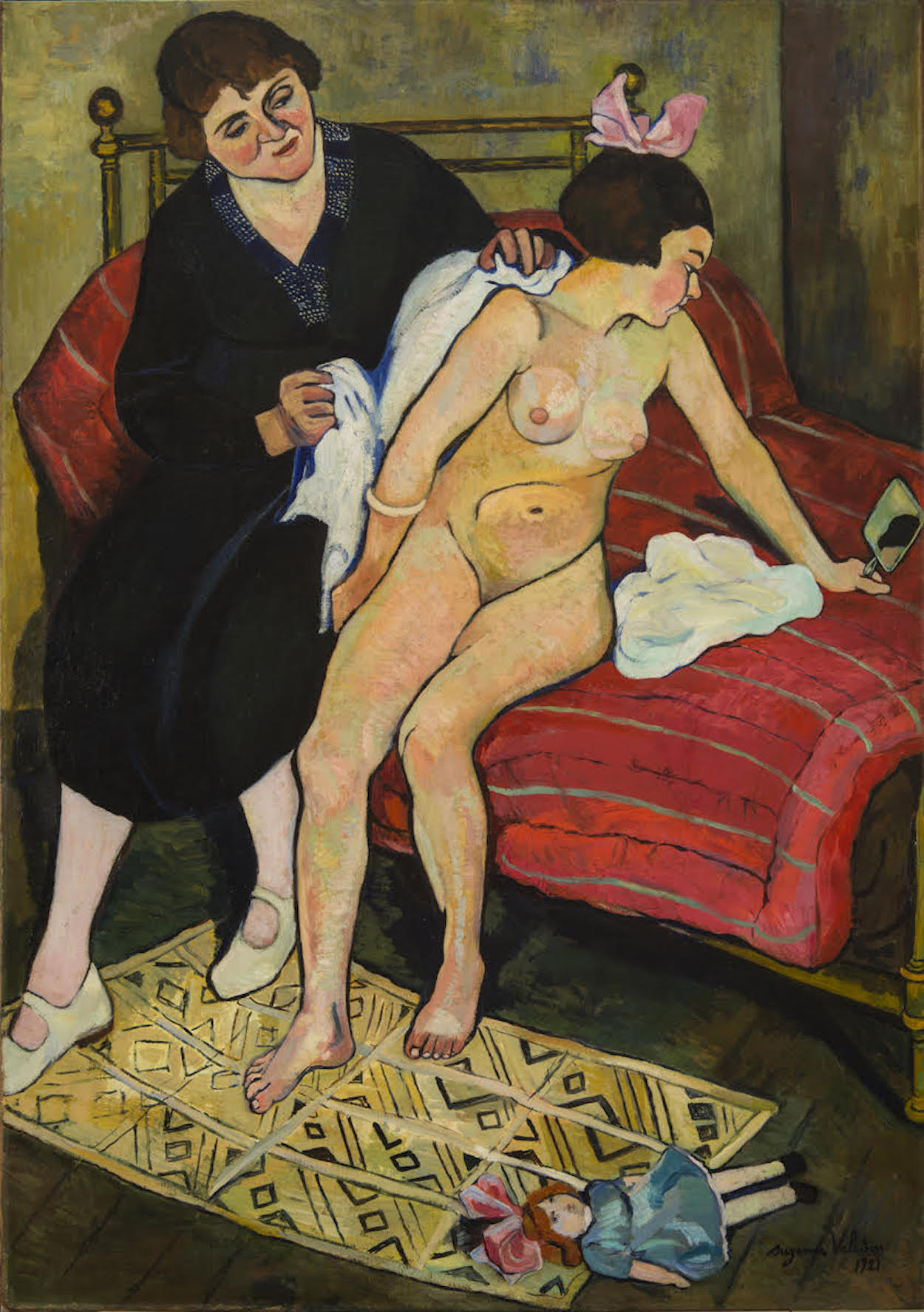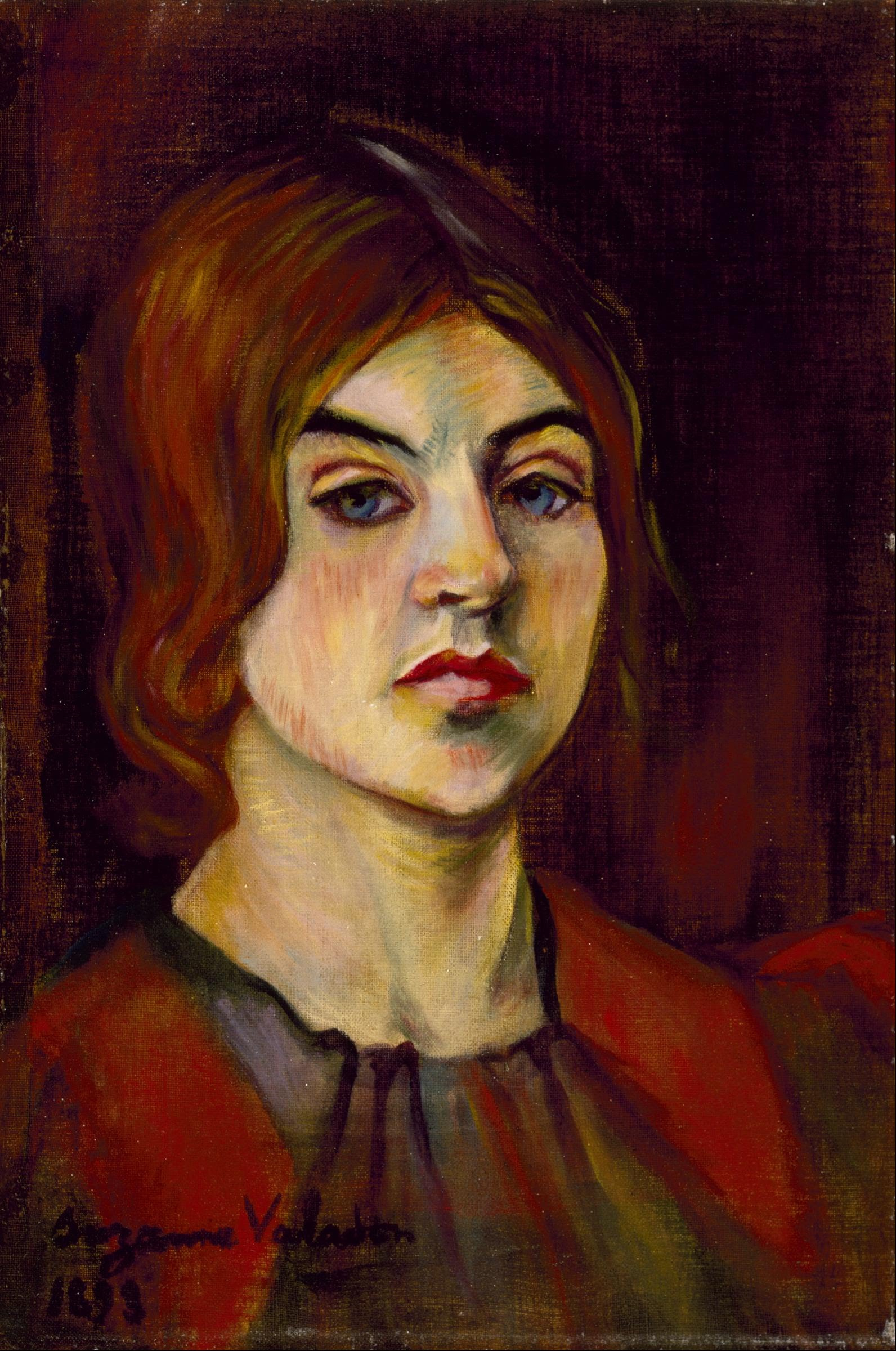Exactly on this day in 1865, the French painter Suzanne Valadon was born. She created powerful, unconventional, and sometimes controversial figure paintings, often of female nudes. She had no formal training; rather, she assimilated various artistic and intellectual concerns of the 19th and early 20th centuries from direct contact with artists, such as Edgar Degas, Pierre Puvis de Chavannes, and Henri de Toulouse-Lautrec.
In The Abandoned Doll (1921), French painter Suzanne Valadon (1865–1938) portrays an intimate scene with a strong psychological mood. Seated on a bed, a fully clothed woman towels dry a girl. The girl, clad only in a pink hair ribbon, turns away from the woman and appears to inspect herself in a hand mirror. The pink bow echoes that in the hair of the doll, a symbol of childhood forgotten on the floor near the bed. This visual connection, combined with the girl’s maturing body, suggests that this is a moment of transition in her young life.
Though we know the figures portrayed here are Valadon’s niece and the girl’s mother, the artist refrains from identifying this as a portrait. In this way, the painting tells a more universal story of a girl’s journey from childhood to adolescence, which resonates with many viewers.
This oil painting exemplifies Valadon’s mature style: vivid colors, dark outlines, textile patterns, and simplified forms with awkward poses and distorted anatomy.
National Museum of Women in the Arts, thank you for the story and the reproduction!


 Suzanne Valadon
Suzanne Valadon